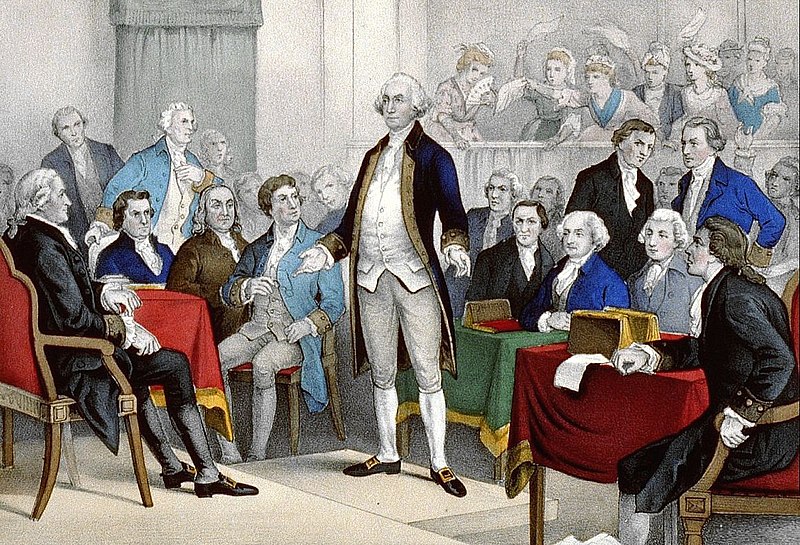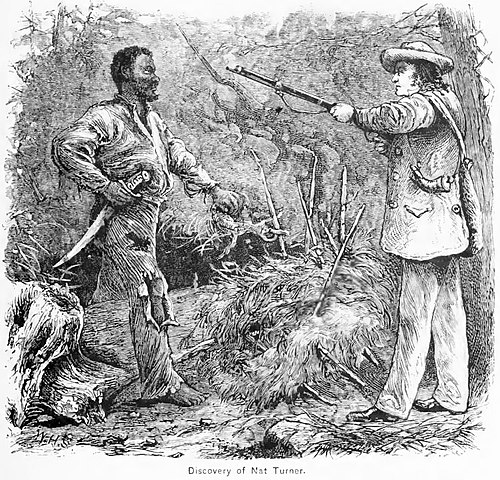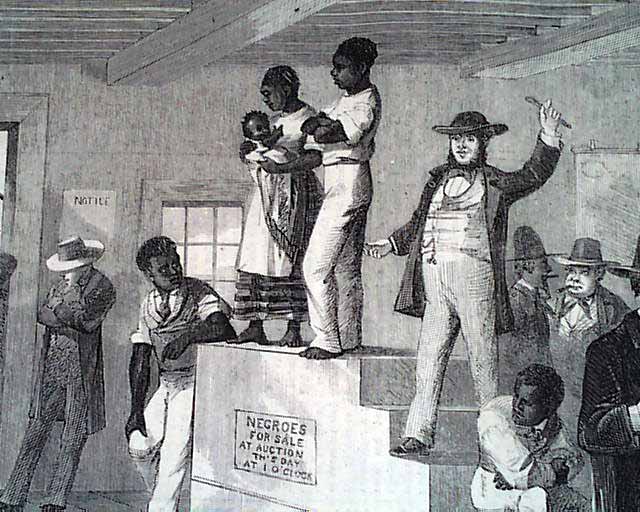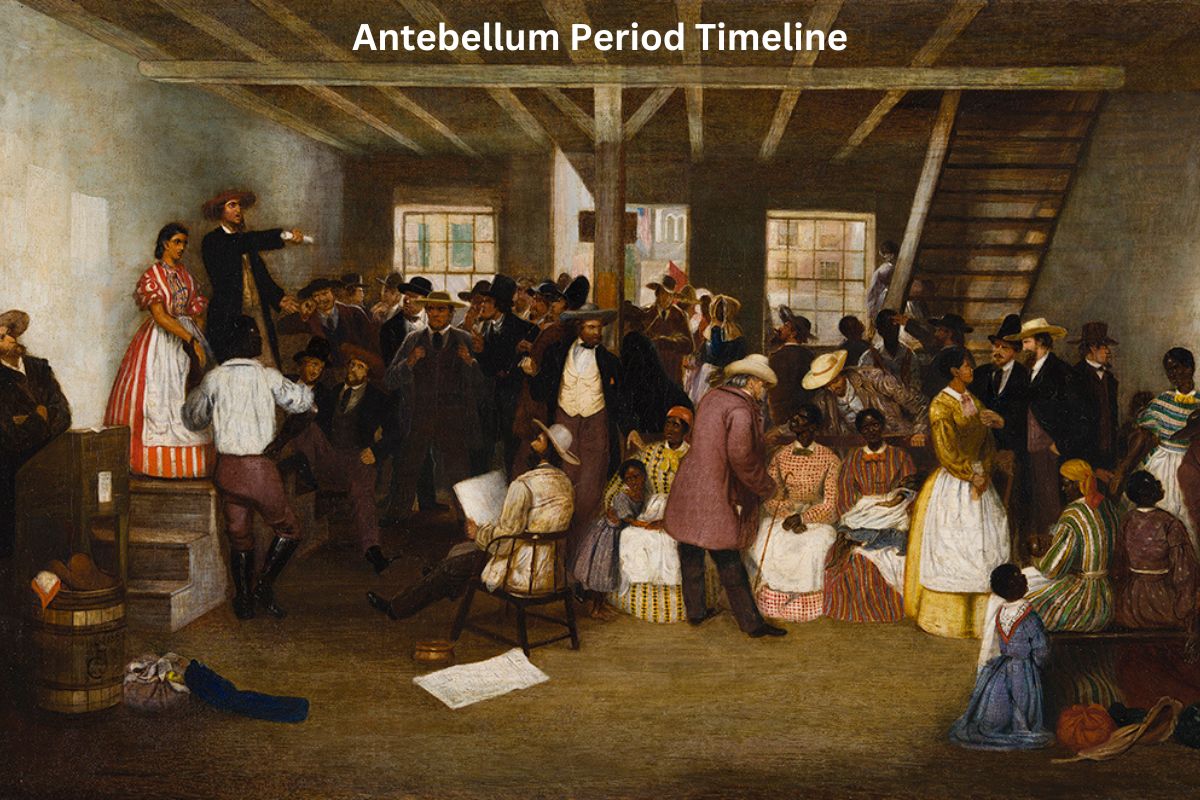The Antebellum period in American history, spanning from the late 18th century to the mid-19th century, was a time of significant political, social, and economic change.
It was characterized by the growing tensions between the Northern and Southern states over issues such as slavery, states’ rights, and territorial expansion.
In this turbulent era, a series of pivotal events unfolded, shaping the course of the nation and ultimately leading to the outbreak of the American Civil War.
This introductory overview provides a glimpse into the critical historical developments during the Antebellum period.
| Year | Event |
|---|---|
| 1787 | Constitutional Convention |
| 1790 | First Census |
| 1803 | Louisiana Purchase |
| 1812-1815 | War of 1812 |
| 1820 | Missouri Compromise |
| 1823 | Monroe Doctrine |
| 1830-1850 | Indian Removal Act and Trail of Tears |
| 1831 | Nat Turner’s Rebellion |
| 1836 | Texas Independence |
| 1846-1848 | Mexican-American War |
| 1850 | Compromise of 1850 |
| 1852 | Publication of “Uncle Tom’s Cabin” |
| 1854 | Kansas-Nebraska Act |
| 1857 | Dred Scott Decision |
| 1860 | Election of Abraham Lincoln |
Timeline of the Antebellum Period
1787: Constitutional Convention
In 1787, delegates from the thirteen American states gathered in Philadelphia for the Constitutional Convention.
The primary purpose of the convention was to address the weaknesses of the Articles of Confederation, the nation’s first governing document. Instead, the delegates decided to draft an entirely new constitution.
The Constitutional Convention produced the United States Constitution, which is the supreme law of the land to this day. It established the framework for the federal government, separating powers among three branches (executive, legislative, and judicial) and ensuring a system of checks and balances.
The Constitution also included the Bill of Rights, the first ten amendments that safeguarded individual rights and liberties. The document was ratified by the states in 1788 and became effective in 1789 when George Washington was inaugurated as the first President of the United States.

1790: First Census
The first census of the United States took place in 1790. It was conducted to determine the population and to gather demographic information about the newly formed nation.
The results of the 1790 census revealed that the population of the United States was approximately 3.9 million people. This data was essential for determining representation in Congress and allocating taxes among the states.
Subsequent censuses have been conducted every ten years since then, as mandated by the Constitution. The census plays a crucial role in determining political representation, federal funding allocation, and demographic trends in the country.
1803: Louisiana Purchase
In 1803, President Thomas Jefferson negotiated one of the most significant land acquisitions in American history, known as the Louisiana Purchase. The United States acquired a vast territory from France, doubling the size of the nation.
The Louisiana Purchase encompassed approximately 828,000 square miles of land, including the entire Mississippi River basin. It extended from the Mississippi River to the Rocky Mountains, and from the Gulf of Mexico to the Canadian border.
This acquisition allowed for westward expansion and the opening of new lands for settlement and economic development. It also set the stage for exploration, most notably the Lewis and Clark Expedition (1804-1806), which aimed to explore and map the newly acquired territory.
The Louisiana Purchase had a profound impact on the growth and development of the United States, shaping its expansion and manifest destiny, while also raising questions about the extension of slavery into the new territories.
1812-1815: War of 1812
The War of 1812 was a conflict between the United States and Great Britain that lasted from 1812 to 1815. It was driven by several factors, including trade restrictions imposed by Britain, the impressment of American sailors into the British Navy, and disputes over territorial boundaries.
Notable events during the war included the burning of Washington, D.C., by British forces in 1814 and the defense of Fort McHenry in Baltimore, inspiring the writing of “The Star-Spangled Banner” by Francis Scott Key.
The Treaty of Ghent in 1814 ended the war, with both sides agreeing to return to pre-war borders and status quo. Although the war did not result in any significant territorial changes, it had significant consequences, including boosting American nationalism and sparking westward expansion.

1820: Missouri Compromise
The Missouri Compromise was a legislative solution to the issue of the spread of slavery into new territories and states. In 1820, Missouri sought admission to the Union as a slave state, which would upset the delicate balance between slave and free states in Congress.
To maintain this balance, Congress passed the Missouri Compromise. It admitted Missouri as a slave state but also admitted Maine as a free state, ensuring an equal number of slave and free states. Additionally, it prohibited slavery in the Louisiana Territory north of the 36°30′ parallel, except for Missouri.
The Missouri Compromise temporarily eased tensions over slavery in the early 19th century. However, it did not address the underlying issues of slavery’s expansion, and tensions would continue to rise.
1823: Monroe Doctrine
The Monroe Doctrine, articulated by President James Monroe in his annual message to Congress in 1823, was a significant foreign policy declaration. It asserted that the Western Hemisphere was off-limits to further European colonization and that any interference in the affairs of independent nations in the Americas would be viewed as a threat to the United States.
The doctrine had two primary principles: non-interference and non-colonization. It was intended to prevent European powers, especially Spain and the Holy Alliance (composed of European monarchies), from reasserting control over newly independent Latin American countries.
While the Monroe Doctrine had limited immediate impact due to the relative weakness of the United States at the time, it later became a cornerstone of American foreign policy and played a role in shaping the nation’s relations with Latin American countries and European powers in the 19th century.
1830-1850: Indian Removal Act and Trail of Tears
The Indian Removal Act of 1830, signed into law by President Andrew Jackson, authorized the forced removal of Native American tribes from their ancestral lands in the southeastern United States to lands west of the Mississippi River. The primary goal was to open up valuable land for white settlers and expand plantation agriculture.
One of the most infamous episodes resulting from the Indian Removal Act was the Trail of Tears, which occurred in the late 1830s. The Cherokee Nation, in particular, faced forced removal from Georgia to present-day Oklahoma. Thousands of Cherokee people died due to harsh conditions during their forced march, which came to be known as the Trail of Tears.
The Indian Removal Act and the subsequent forced removals were devastating for Native American communities and represented a significant injustice in American history. Many tribes lost their lands and traditional ways of life as a result.

1831: Nat Turner’s Rebellion
Nat Turner’s Rebellion, which occurred in Southampton County, Virginia, in 1831, was one of the most significant slave uprisings in American history. Nat Turner, a literate enslaved preacher, led a group of fellow enslaved individuals in a violent revolt against their white enslavers.
The rebellion resulted in the deaths of approximately 55 white people, including men, women, and children. In response, Virginia authorities swiftly suppressed the rebellion, and Nat Turner was captured and later executed.
Nat Turner’s Rebellion had a profound impact on the South, leading to harsher slave codes, increased surveillance of enslaved individuals, and heightened fears among white slaveholders regarding potential slave revolts. It also fueled the abolitionist movement in the North.
1836: Texas Independence
The Texas Declaration of Independence was adopted on March 2, 1836, leading to the establishment of the Republic of Texas. This declaration followed the Texas Revolution, a conflict between American settlers in Texas and Mexican authorities.
The most famous battle of the Texas Revolution was the Battle of the Alamo, where a small group of Texan defenders, including Davy Crockett and Jim Bowie, fought against a larger Mexican force led by General Antonio López de Santa Anna.
Texas remained an independent republic for nine years, with Sam Houston serving as its first president. In 1845, Texas was annexed by the United States and became the 28th state, further exacerbating tensions between the North and South over the issue of slavery.
1846-1848: Mexican-American War
The Mexican-American War was a conflict between the United States and Mexico that began in 1846 and ended with the signing of the Treaty of Guadalupe Hidalgo in 1848.
The war was primarily driven by disputes over the southern border of Texas and the desire for territorial expansion. The United States achieved significant military victories, including the capture of Mexico City.
The Treaty of Guadalupe Hidalgo ceded a vast amount of Mexican territory to the United States, including present-day California, New Mexico, Arizona, Nevada, Utah, and parts of Colorado, Wyoming, Kansas, and Oklahoma.
This expansion further intensified debates over the extension of slavery into newly acquired territories and contributed to the growing sectional divide between the North and South.

1850: Compromise of 1850
The Compromise of 1850 was a series of legislative measures aimed at resolving the sectional conflicts over the expansion of slavery in the newly acquired territories from the Mexican-American War. The key elements of the compromise included:
- The admission of California as a free state.
- The establishment of the Utah and New Mexico territories with popular sovereignty, allowing residents to decide the issue of slavery for themselves.
- The abolition of the slave trade (but not slavery itself) in the District of Columbia.
- A more stringent Fugitive Slave Act, which required citizens in free states to assist in the capture and return of escaped slaves.
The Compromise of 1850 was seen as a temporary resolution to the slavery question, but it did not fully satisfy either side. It temporarily eased tensions but also further divided the nation along sectional lines.
1852: Publication of “Uncle Tom’s Cabin”
“Uncle Tom’s Cabin” is a novel written by Harriet Beecher Stowe and published in 1852. The novel vividly depicted the harsh realities of slavery and the suffering endured by enslaved individuals in the American South.
The book had a profound impact on American society, both in the North and the South. It became a bestseller and ignited passionate debates about slavery and its moral implications. Abolitionists embraced the book, while many in the South viewed it as an attack on their way of life.
“Uncle Tom’s Cabin” is often credited with helping to galvanize anti-slavery sentiment in the North and played a role in the lead-up to the Civil War.
1854: Kansas-Nebraska Act
The Kansas-Nebraska Act of 1854 was a significant piece of legislation that repealed the Missouri Compromise of 1820 and allowed for popular sovereignty in the territories of Kansas and Nebraska. This meant that the residents of these territories could decide whether to permit or prohibit slavery.
The act sparked a wave of violence and conflict in Kansas, as pro-slavery and anti-slavery settlers poured into the territory, leading to a period known as “Bleeding Kansas.” This violence highlighted the deep divisions over slavery and contributed to the increasing polarization between the North and South.
The Kansas-Nebraska Act is often seen as a catalyst for the formation of the Republican Party, which emerged as a predominantly anti-slavery political party in the North.

1857: Dred Scott Decision
The Dred Scott v. Sandford Supreme Court decision of 1857 was a landmark ruling that had significant consequences for the slavery debate and the status of African Americans in the United States.
Dred Scott, an enslaved man, had sued for his freedom, claiming that his residence in free territories should make him a free person.
The Supreme Court, in a controversial decision, ruled that African Americans, whether enslaved or free, were not considered citizens under the U.S. Constitution and therefore could not bring a case to court.
The decision also declared the Missouri Compromise unconstitutional, effectively allowing slavery to expand into all U.S. territories. It intensified tensions between the North and South and further polarized the nation on the issue of slavery.
The Dred Scott decision is often cited as one of the factors that contributed to the outbreak of the Civil War, as it deepened the divide between the North and South over the expansion of slavery.
1860: Election of Abraham Lincoln
The presidential election of 1860 was a pivotal moment in American history. Abraham Lincoln, a Republican from Illinois who opposed the expansion of slavery into new territories but did not advocate for its immediate abolition in existing slave states, emerged as the Republican candidate.
The election took place at a time of extreme sectional tension. Lincoln’s victory was seen by many in the South as a direct threat to their way of life, as they believed he would seek to limit the expansion of slavery and potentially work toward its eventual extinction.
Lincoln won the election, carrying the Northern states and securing the presidency without receiving a single electoral vote from the Southern states. His election prompted several Southern states to secede from the Union in the months that followed, ultimately leading to the outbreak of the Civil War.
